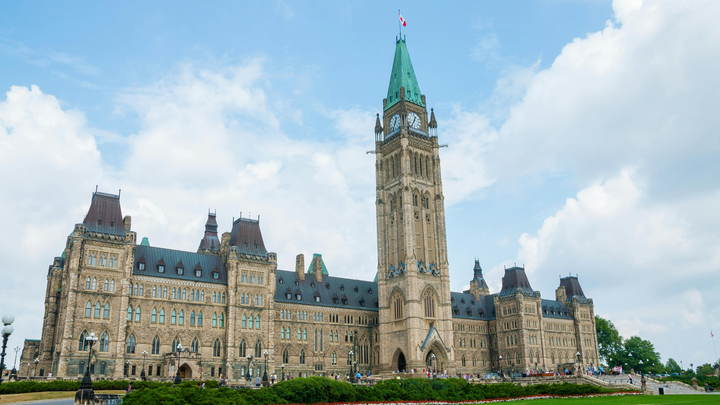The National Post is Wrong on Support for Private Healthcare
The newspaper's worship of privatization bends reality to its breaking point

On Dec. 11, 2022, in a “Special to the National Post,” The Hub editor-in-chief Stuart Thomson claimed Canadians are willing to embrace private healthcare due to long wait times in the public system. Titled “Medicare meltdown: Wait-weary Canadians ready to embrace private care,” the piece also pointed to the severity of surgery backlogs. It referenced wait time concerns, out of context statements, and one interview with a famed advocate for private healthcare to support its claims. The report didn’t include interviews with any average Canadians on the subject.
Thomson’s outlet, The Hub, is a media project by the Centre for Civic Engagement. The publication counts senior economic adviser to former prime minister Stephen Harper Sean Speer, founding National Post editor Ken Whyte and Munk Debates founder Rudyard Griffiths among its ranks.
Thomson’s article continually sounds alarms about the dangers of long wait-times and surgery backlogs in Canadian hospitals, dedicating a large portion of its word-count to this fact. Most of these conclusions are not in dispute.
However, Thomson assumes Canadians’ very real concern for healthcare wait times also reflect a belief that this issue can be solved with private care. In actuality, the piece is an exercise in disinformation. It frames neoliberal politicians, think tanks and profiteers as having a solution to reduce wait times, rather than creating profit. It also omits the concerns of regular Canadians entirely.
A problem of sourcing
The primary resource for much of the claims cited in the article come from The Fraser Institute, a right-wing think tank that promotes neoliberalism and market solutions to the Canadian economy. In one instance, Thomson claims two sources, Bacchus Barua and Mackenzie Moir, say that wait times have dire consequences for those who need medicare, linking to their report published by the institute.
Barua and Moir are simply introduced as impartial “health policy analysts.” In truth, they’re both employed directly by the Fraser Institute itself. Barua is listed as Director of Health Policy Studies, and Moir as a policy analyst. Thomson presumably knows this, as he cites the Fraser Institute a total of nine times throughout the piece. Despite their association, however, their positions in relation to the think tank are left unmentioned.
The only person interviewed directly on this subject is Janice MacKinnon, who the article notes was a cabinet minister in Saskatchewan’s provincial government. MacKinnon was, among other positions, Minister of Finance for the NDP Premier Roy Romanow.
Since then, her most notable public contributions have been decidedly in favour of healthcare privatization. In 2016, she wrote policy for the Fraser Institute (cited in the piece) extolling the virtues of private healthcare in the Saskatchewan Surgery Initiative. While the report praised the policy for bringing private healthcare to lower wait times in the province, it noted, “The SSI was successful within a specific context. It only improved wait times for elective surgery; long waits remain in other areas.” Thomson doesn’t note this in his article.
More recently, in 2019, then-conservative Alberta Premier Jason Kenney appointed MacKinnon head of the Blue Ribbon Panel on Alberta’s Finances, which was tasked with reducing Alberta’s deficit but was expressly forbidden from looking at ways to increase revenue. Here’s one of the suggestions on healthcare outlined in the report’s executive summary.
Recommendation 3: Make greater use of alternative service delivery for day procedures and other services that do not have to be delivered in hospitals and could be delivered in private or not-for-profit facilities (emphasis mine). The use of alternative service delivery should be applied to other areas beyond health.
The report later favours privatization on a primarily monetary basis, stating, “Many procedures which are performed in hospitals could be performed more appropriately and more cost effectively in other settings like private clinics.”
Romanow, the former premier under whom MacKinnon served, disagrees with her views on privatization. After Romanow resigned as premier of Saskatchewan in 2001, he oversaw a federally-commissioned report on health care released in 2002. Titled Building on values: the future of health care in Canada, the report found a completely different conclusion on the state of private healthcare. Romanow wrote:
The Commission is strongly of the view that a properly funded public system can continue to provide the high quality services to which Canadians have become accustomed. Rather than subsidize private facilities with public dollars, governments should choose to ensure that the public system has sufficient capacity and is universally accessible. (p.8)
MacKinnon’s views on health care are directly contradicted by the premier she served under. This doesn’t necessarily make her wrong, but it might have been worth a mention in the National Post piece that appeals to her authority.
Thomson also cites Canadian Medical Association President Dr. Katherine Smart’s statements about wait times. This is one of the many sources on the crisis in Canadian health care cited throughout the piece. Though Smart is referenced on the subject of wait times, Thomson doesn’t consult her on her proposed solution. This may be because Smart has publicly come out against privatization of the healthcare system, “What starts to happen, of course, is differential access to care. So people with more resources have more access, shorter wait times, and people who don’t, do not,” she told CTV.
Perhaps even more egregious, Thomson’s article cites Brian Day’s column in The Globe and Mail suggesting that Canadians would prefer private healthcare to long waiting times — a blatant false binary.
In a separate Globe and Mail piece on Day’s legal challenge, which lost an appeal in B.C’s highest court, reporter Alanna Smith describes Day’s interest in private health care:
Dr. Day is an orthopedic surgeon and president of the Cambie Surgery Centre, which openly flouts the province’s medicare law by allowing patients to pay out-of-pocket for surgical procedures.
Despite this clear conflict of interest on privatization, the National Post takes his statements at face-value.
Day argues privatization should happen and that private care should be funded by the government. He does this while he has founded and currently directs a private health care facility. These are the experts who the National Post suggests represent public sentiment.
A dread in the polls
Thomson refuses to cite any polls other than those referenced by Day in his Globe and Mail piece. The author merely reports second-hand from Day that “Canadians are more supportive of private delivery as a response to long wait times, as opposed to abstract questions about private and public health care.” So let’s examine the veracity of his statement.
The first poll Day cites was commissioned by the Canadian Constitution Foundation, and the article he links to is written by the foundation’s litigation director Christine Van Geyn. The poll itself is not provided, but the question that garnered these results is telling when shown alongside the data.
Governments in Canada have created maximum medically acceptable wait times beyond which there is an increased risk of harm and, for some conditions, a risk to life.
Do you agree that Canadian patients who are waiting past the maximum medically acceptable time for treatment in the public system be allowed to use private insurance to access the medically necessary care?
With that language, there was a 74.6 per cent agreement among respondents. The other poll cited by Day was reported in the Vancouver Sun, also commissioned by the Canadian Constitution Foundation. This poll was also not linked to directly and had similar caveats. Most notably, the question to agree or disagree was that the Canadian Charter “should allow patients who have been on provincial healthcare wait lists longer than the maximum recommended waiting period for their condition to pay for private treatment.”
Let’s return to the claim in the article that “Canadians are more supportive of private delivery as a response to long wait times, as opposed to abstract questions about private and public health care.” It’s clear that when presented with a dichotomous option of public wait times vs. private health care, the only solution to the problem presented is privatization.
A truly representative poll on the subject would suggest other fully-explained solutions in comparison to privatization, to see which garners the most support.
This becomes clear through contrasting these results to polls where the idea of privatization is addressed directly. Ipsos conducted a poll in October of this year that found less Canadians support increased access to private healthcare than in previous years.
Even though the poll found that a slim majority agreed with more access to private health care (52 per cent), Ipsos noted the result “nonetheless represents a drop of six-point compared to last year and an 11-point drop compared to 2020.” It also found that two-thirds surveyed believe Canada should follow the “French or Swedish” model of health care, which Ipsos describes as “enabl[ing] private entrepreneurs to manage certain public hospitals, provided that medically required care remains covered and fully reimbursed by the government.” Though it’s important to note that over 80 per cent surveyed reported they were not aware of this system. Despite the tepid support this poll lends to Thomson’s case, it wasn’t referenced in his piece.
An Angus Reid opinion survey conducted in September 2022, however, found that 50 per cent of Canadians said incorporating more private health care would worsen the public system, while just 32 per cent thought it was a good idea. Notably, the most support for more private care in the health-care system came from respondents who made more than $200,000 a year, but still only topped out at 45 per cent.
At best, Canadians are mildly in support of more private health care in some capacity, but the extent of which is not clear. For example, if one respondent wanted to pay a private provider for foot stitches in return for less waiting time, they are weighted equally to one who prefers most hospitals to be private. This nuance is nowhere to be found in the Post piece, where it’s dismissed as “abstract questions about private and public health care.”
Radio silence on tangible solutions
Despite the concern about wait times being used as a justification for privatization, it is typically not shown to be a solution to excessive wait times.
There are actual policies that could be implemented, which would sidestep this question entirely.
The Ontario Medical Association conducted a detailed report that concluded an Integrated Ambulatory Care system, one that uses publicly-funded facilities independent of hospitals, would drastically improve Ontario’s healthcare crisis.
“In addition to shorter wait times, patients spend less time in ambulatory facilities than they do in hospitals and can safely return home the same day,” said OMA president Dr. Adam Kassam.
Other methods to ease pressure on health-care systems include rapid assessment zones, online mental health resources as well as increased at-home care and long-term care home capacity. Single-entry models would reportedly improve efficiency by 20 to 30 per cent. All of these solutions come from medical professionals and patients who have first-hand experience with the system.
However, many of these solutions directly contradict conservative policy. Instead of implementing any of the solutions mentioned here, Ford called in the Red Cross to help pediatric hospitals. Virtual medical appointments are losing financial support. Instead of working to improve LTC capacity and at-home care, Ontario is fining occupants $400 a day if they refuse to move from a hospital bed. Those who facilitated horrific abuses in LTCs still don’t face consequences.
Ontario has so far only spent 11 per cent of its $1.7 billion COVID-19 Response budget in 2022. Premiers across the board are demanding increased federal healthcare money and yet are refusing to accept conditions that come along with it. None of this is mentioned in Thomson’s piece.
Left to fend for themselves
It’s important to note that this supposed clamouring for private healthcare has not been reflected in public sentiment.
Unions like the Canadian Union of Public Employees and organizations like the Ontario Health Coalition have long raised the alarm about privatization in the province. While not speaking for the entirety of Canadians, these voices represent thousands of people. Conversely, no organization near these in size have publicly declared support for privatizing health care. This dynamic doesn’t factor into the Post article on whether Canadians prefer private care or not.
Where are these “Wait-weary Canadians ready to embrace private care”? They’re certainly not in this piece.
The article barely mentions the ongoing pandemic. When it does, it’s mainly in the past tense, without addressing the lack of public health measures and their effects on hospitals. COVID continues to run rampant through the population, despite our understanding of its negative effects becoming more apparent. Mask mandates refused to be implemented by governments, despite their efficacy. RSV cases have also surged, adding strain to the system. All of this goes unmentioned by Thomson.
This article and the way it’s framed entirely sidestep the actual question of whether or not Canadians are in favour of privatization. The piece cites statistics like a 3.5 per cent increase in operating room hours in B.C as a victory for the private sector, whereas methods to increase efficiency by a 20 per cent minimum, while staying within the public healthcare system, go unmentioned. The only sources used in support of privatization are politicians who have hung their hats on the issue (who are contradicted by other reports), or providers who financially benefit from its implementation.
Most Canadians are acutely aware of the crisis our health-care system is facing, yet privatization has little widespread support, except, of course, for those who personally benefit from its implementation. The National Post, unsurprisingly, is more interested in what the latter has to say.
Edited by Jeremy Appel




Comments ()